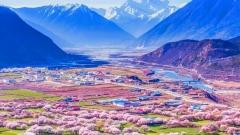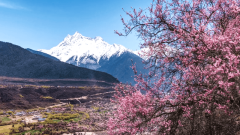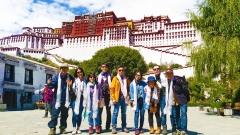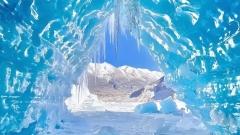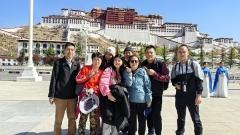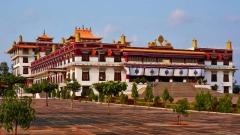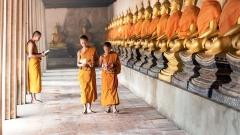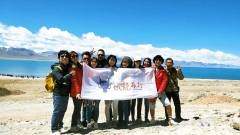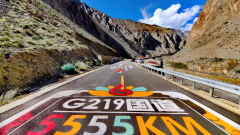When travelers think of Tibet, Lhasa and Shigatse often come to mind first. Yet, south of Lhasa lies Lhoka (Shannan), known as the “cradle of Tibetan civilization.” This historic region is home to Tibet’s first palace, first monastery, and first farmland, making it an essential destination for those who want to trace the origins of Tibetan culture. With its unique mix of sacred sites, natural wonders, and authentic rural life, Lhoka offers a journey back in time to where Tibet’s story began.
Why Visit Lhoka?
Lhoka holds a special place in Tibetan history and spirituality. It is where the first Tibetan king, Nyatri Tsenpo, is said to have descended from the heavens, and where Buddhism first took root on the plateau. Travelers here can discover ancient palaces, centuries-old monasteries, stunning lakes, and the living traditions of local communities. Unlike the busier cities of Tibet, Lhoka provides a more peaceful and authentic travel experience.
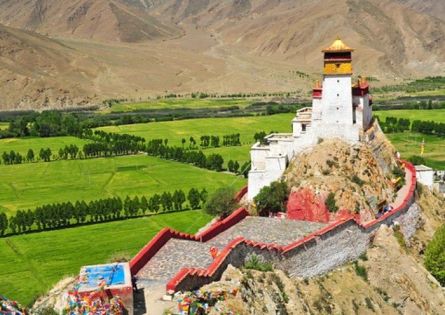
Shannan’s Terraced Valleys
Top Attractions in Lhoka
1. Yungbulakang Palace
As Tibet’s very first palace, Yungbulakang stands on a hill overlooking the fertile Yarlung Valley. It was originally built for King Nyatri Tsenpo and later became a Buddhist monastery. Its commanding position offers panoramic views of the valley below, making it a must-see for both history lovers and photographers.
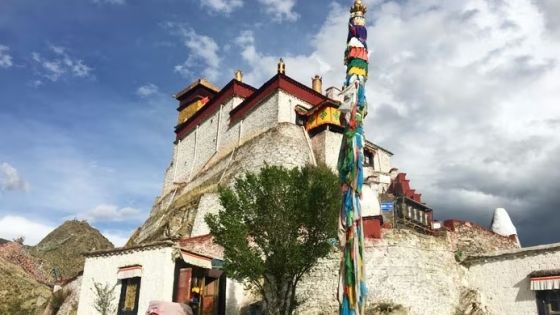
Yungbulakang Palace
2. Samye Monastery
Founded in the 8th century by King Trisong Detsen and Guru Padmasambhava, Samye is celebrated as Tibet’s first monastery. Its layout is a symbolic representation of the Buddhist universe, with the central temple representing Mount Meru and surrounding buildings symbolizing continents. This makes Samye not only a religious site but also an architectural masterpiece.
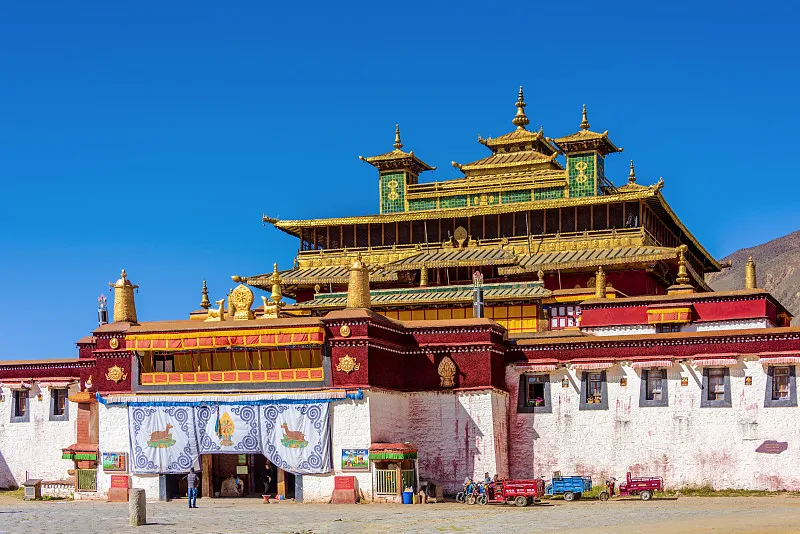
Shannan Samye Temple
3. Yamdrok Lake
One of Tibet’s most breathtaking sacred lakes, Yamdrok Lake is a jewel of turquoise blue surrounded by snow-capped mountains. It is considered a holy lake that embodies spiritual energy. Travelers often stop here en route to Gyantse or Shigatse, but it also makes a perfect day trip from Lhoka.
4. Trandruk Monastery
Located near Tsedang, Trandruk is one of Tibet’s earliest Buddhist temples. It houses the famous pearl thangka of Avalokitesvara (Chenresig), a precious relic adorned with thousands of pearls. This monastery offers a quieter, more intimate glimpse of Tibetan Buddhist practice.
5. Yarlung Valley
Known as the “valley of kings,” the Yarlung Valley is considered the birthplace of Tibetan civilization. Ancient tombs of Tibetan kings are scattered across this fertile land, telling stories of early dynasties and their legacy. The valley’s beauty, combined with its cultural depth, makes it one of the most fascinating areas of Lhoka.
Culture and Traditions
Lhoka is deeply rooted in Tibetan traditions. Farmers still cultivate barley, Tibet’s staple crop, as their ancestors did centuries ago. Festivals such as the Yarlung Cultural Festival bring locals together to celebrate with music, dance, and horse racing. Travelers visiting during these times can witness the vibrant spirit of Tibetan heritage.
How to Travel to Lhoka
Lhoka is conveniently located just south of Lhasa, about a 2-hour drive away. Most tours start in Lhasa to allow for acclimatization before traveling further. Visitors usually combine Lhoka with nearby highlights such as Yamdrok Lake, Gyantse, or even Everest Base Camp, depending on the length of their Tibet journey.
Travel Tips
-
Best Time to Visit: May to October, when the weather is warm and the scenery is at its best.
-
Permits: Foreign travelers need a Tibet Travel Permit, which must be arranged through a registered travel agency.
-
Altitude: At around 3,600m (11,800ft), Lhoka is slightly lower than Lhasa, but it is still important to pace yourself and stay hydrated.
-
Accommodation: Tsedang, the capital of Lhoka, offers a range of hotels from budget to comfortable 4-star options.
Conclusion
A trip to Tibet would not be complete without exploring Lhoka, the land where Tibetan culture and history first blossomed. From the majestic Yungbulakang Palace to the serene waters of Yamdrok Lake, every site here tells a story of origins, spirituality, and resilience. For travelers seeking a deeper connection to Tibet beyond the famous landmarks, Lhoka is the place to go.



